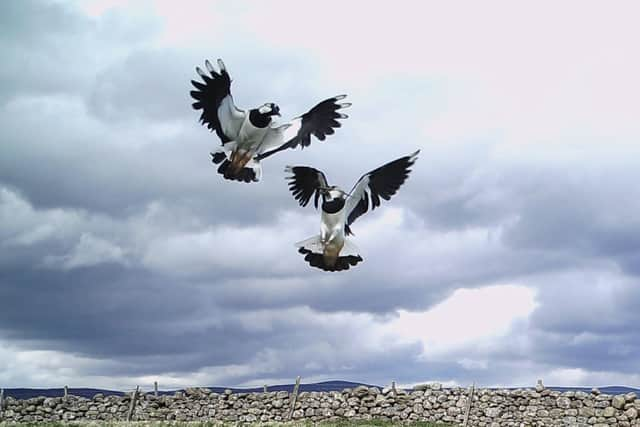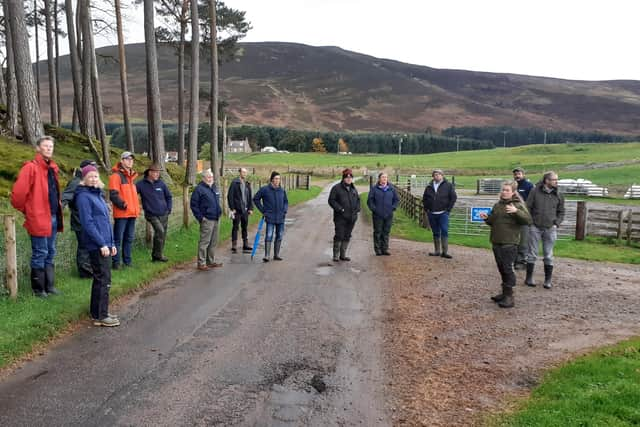Trust team walk the walk for wildlife - Ross Macleod
Balgonie lies in the arable heartland of central Fife and is the Game and Wildlife Conservation Trust’s prime EU Partridge project demonstration site in Scotland, where productive arable farming sits comfortably alongside measures to support farmland wildlife.
Yellowhammers skipped from the hedgerows as we walked between fields, while above us, skylarks flew high in the breeze and sang out. Back on the ground, a grey partridge quickly scuttled out of sight as our group stopped to examine wildflower plots and conservation margins beside the emerging cereal crops, which have already led to increases in wildlife populations on the farm.
Advertisement
Hide AdAdvertisement
Hide AdA week later found much the same group visiting the GWCT’s Demonstration Farm, Auchnerran in Aberdeenshire. This is a very different agricultural environment. Hard on the shoulder of Morven Hill, the farm is on marginal grassland with a flock of 1,400 blackface ewes and followers as the main source of income for the farming enterprise. As we paused to consider soil health, we could hear the bubbling call of curlews, while oystercatchers piped a different note and lapwings provided us with their acrobatic flight displays.


The last few weeks have rewarded us with good weather to discuss ways in which productive farming can blend with environmental stewardship and the two events included lively discussions about tackling global climate change and how agri-environment schemes may look in the future, amongst many other topics.
Farming, food and drink make a highly significant contribution to Scotland’s prosperity, to the rural economy and to local communities dependent on the agricultural sector. The industry is renowned for quality, world-leading standards, and characteristic products.
This has been driven by support for innovation, productivity, and efficiency. Yet as we know from the decades after the end of war in 1945, the drive for food security and efficiency has also marked a decline in farmland wildlife.
The Game Conservancy Trust – the forerunner of today’s GWCT – established the Sussex study in 1968, now the longest-running monitoring project in the world measuring the impact of changes in farming on the fauna and flora of arable land. The study identified that the main reason for the decline in Grey Partridges, a key indicator species, was a reduction of chick-food insects in cereal crops resulting from the disappearance of arable weeds. This followed the first use of herbicides in the late 1950s.


The specific challenges illustrated by the Sussex study can also be found in different farming environments. Across the UK for instance, cropping for silage has had a significant impact on farmland birds such as curlews and lapwings.
Scottish Farmers are therefore being challenged to maintain production as well as ensuring sustainable delivery. This has largely arisen from the need to address climate change and combat biodiversity loss – initiatives now carved into the heart of Scottish Government policy.
Back to our two farm "walk and talk” events, which were set up to assist knowledge exchange between practitioners and the NatureScot team developing the future support schemes for Scotland’s farmers. These will focus on delivery of environmental outcomes that land managers will need to show to receive public financial support. The presence of farmland birds on both our demonstration sites indicates that with the right incentives, the twin aims of productive farming and care for the environment can be achieved.
Find out more at northsearegion.eu/partridge/ and www.gwct.org.uk/auchnerran
Ross Macleod is Head of Policy (Scotland) at the Game and Wildlife Conservation Trust
Comments
Want to join the conversation? Please or to comment on this article.